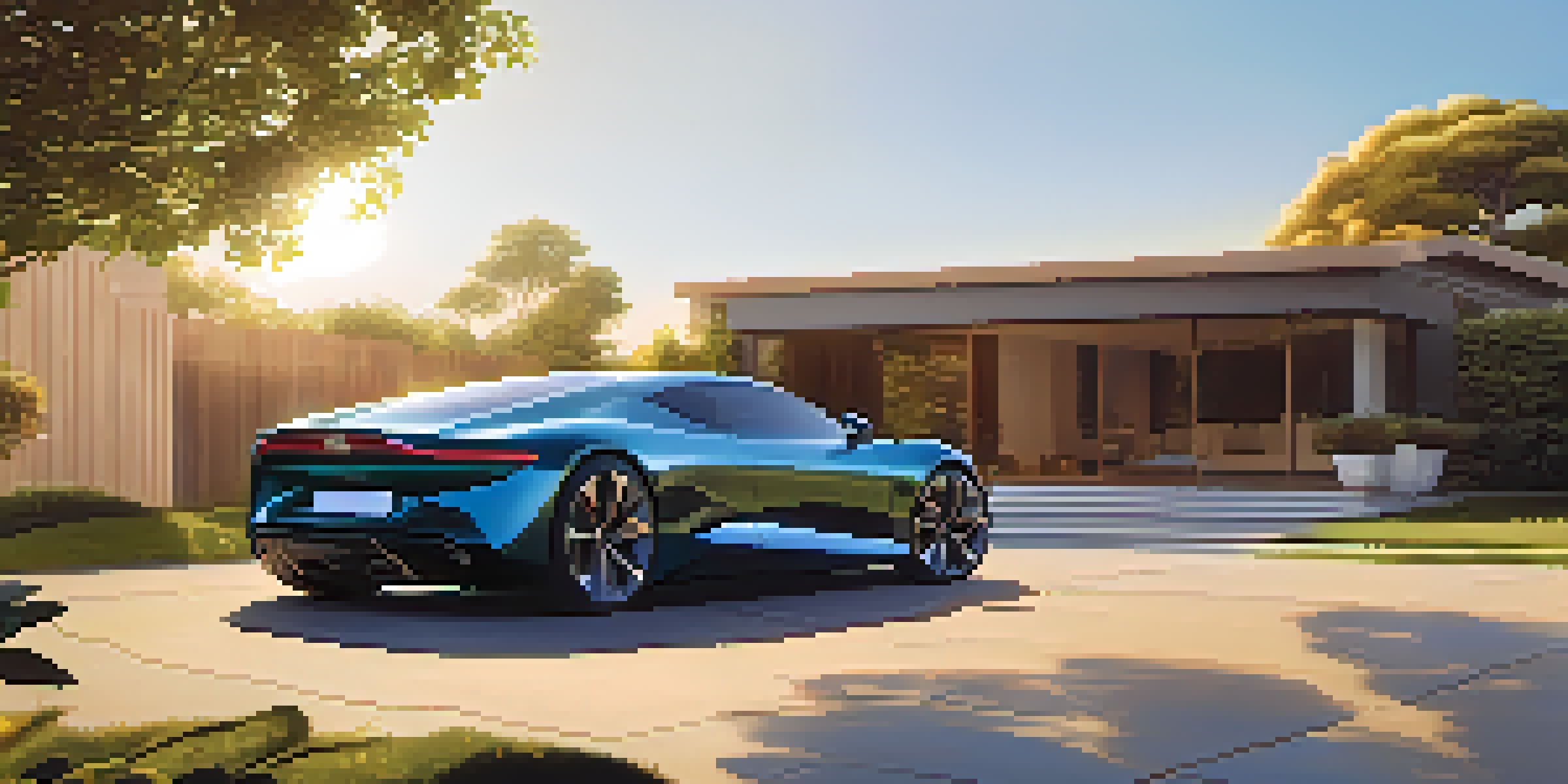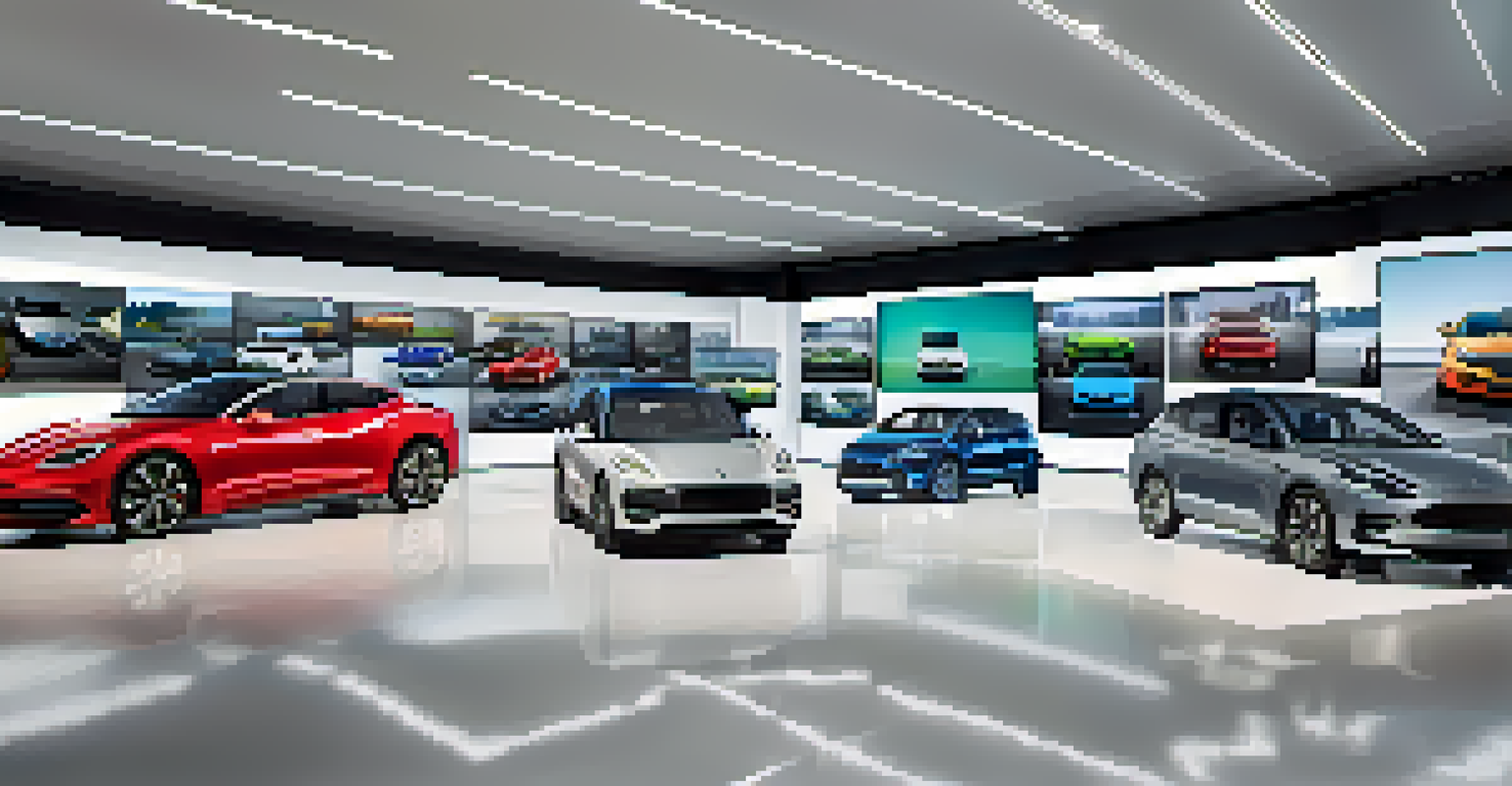Augmented Reality in Automotive: Revolutionizing Car Sales

Understanding Augmented Reality and Its Role in Automotive
Augmented Reality (AR) is a technology that superimposes digital information onto the real world, enhancing our perception of reality. In the automotive sector, AR has emerged as a powerful tool, transforming the way customers interact with vehicles. Imagine being able to see a car's features and specifications projected right in your driveway or showroom.
The future of augmented reality will be about experiences that enhance our everyday lives, not just entertainment.
This innovation is not just about flashy visuals; it provides practical benefits to both buyers and sellers. For customers, AR offers a more immersive experience, allowing them to explore features and options in ways that traditional methods simply can't match. For dealerships, it means a more engaging sales process that can lead to higher conversion rates.
As we dive deeper into the world of AR in automotive sales, we’ll explore its various applications and how they are revolutionizing the customer journey. From virtual test drives to interactive showrooms, the possibilities are endless.
Virtual Test Drives: A Game Changer for Car Buyers
One of the most exciting applications of AR in car sales is the virtual test drive. This feature allows potential buyers to experience a vehicle's performance and features without ever leaving their home. Imagine strapping on a headset and taking a simulated drive through your favorite neighborhood, all while exploring the car’s interior and dashboard functions.

This technology not only saves time but also provides a more personalized experience. Customers can test multiple models from the comfort of their couch, comparing everything from engine sound to interior layout. This level of convenience is especially appealing in today’s fast-paced world.
AR Transforms Car Buying Experience
Augmented Reality enhances the automotive sales process by providing immersive experiences like virtual test drives and interactive showrooms.
As AR continues to evolve, we can expect even more realistic simulations and features that enhance the virtual driving experience. It's a win-win for buyers and dealerships, bridging the gap between online shopping and real-world experiences.
Interactive Showrooms: Redefining the Car Buying Experience
AR is also transforming traditional car showrooms into interactive experiences. Picture walking into a dealership where you can use your smartphone or AR glasses to see detailed information about each vehicle. You could explore the car's features, watch promotional videos, or even customize colors and options right before your eyes.
Technology is best when it brings people together.
This interactive approach not only engages customers but also empowers them to make informed decisions. Instead of relying solely on a salesperson's pitch, buyers can view and interact with vehicles at their own pace. This shift fosters a more relaxed and enjoyable shopping environment.
As showrooms adopt AR technology, they are likely to attract more foot traffic and enhance customer satisfaction. The blend of physical and digital experiences creates an inviting space where buyers feel in control of their journey.
Enhancing Customer Engagement Through AR Features
Customer engagement is crucial in the automotive industry, and AR offers innovative ways to capture attention. One example is AR-enabled brochures that allow users to scan a car’s image and see an animated 3D model pop up on their device. This feature not only grabs attention but also provides valuable information in an entertaining format.
Additionally, AR can facilitate after-sales support by offering virtual maintenance guides. Customers can point their device at their vehicle and receive step-by-step instructions for common tasks like checking oil levels or replacing a tire. This kind of engagement keeps customers connected long after the sale.
Personalization Through AR Technology
AR allows customers to visualize and customize vehicles, creating a tailored buying experience that fosters deeper connections to their chosen cars.
By incorporating AR into their engagement strategies, dealerships can build lasting relationships with customers, encouraging loyalty and repeat business. It’s about creating a community around the brand that extends beyond the initial purchase.
AR as a Tool for Personalization in Car Sales
Personalization is key in today’s consumer market, and AR provides unique opportunities for tailored experiences. With AR, customers can visualize how different features, colors, and accessories would look on a specific vehicle. This level of customization not only makes the buying process more enjoyable but also helps buyers feel a stronger connection to their chosen car.
Imagine being able to create a virtual version of your dream car, tweaking every detail until it matches your vision perfectly. This hands-on approach fosters excitement and investment in the purchasing process, leading to higher satisfaction levels.
As dealerships adopt AR for personalization, they can differentiate themselves in a competitive market. Customers are more likely to remember and recommend experiences that made them feel special and valued.
The Role of Data in Augmented Reality Automotive Experiences
Data plays a pivotal role in enhancing AR experiences in the automotive sector. By analyzing customer preferences and behaviors, dealerships can tailor AR content to meet specific needs. For instance, if a customer frequently explores SUVs, the AR system can prioritize displaying relevant models and features during their virtual interactions.
Moreover, the feedback gathered from AR experiences can inform product development and marketing strategies. Understanding what features capture customer interest allows manufacturers to align their offerings with market demands, ultimately driving sales.
Data-Driven AR Enhancements
Leveraging customer data, dealerships can personalize AR content, improving engagement and aligning offerings with market demands.
The synergy between data and AR not only improves the sales process but also creates a more engaging and relevant experience for customers. This data-driven approach positions dealerships to stay ahead in a rapidly evolving industry.
Challenges and Considerations for AR in Automotive Sales
While the benefits of AR in automotive sales are compelling, there are challenges to consider. One major concern is the accessibility of AR technology. Not all customers may have the required devices or internet connectivity to fully engage with AR experiences. Dealerships must strategize on how to bridge this gap to ensure inclusivity.
Another challenge is the cost of implementing AR solutions. While the initial investment may be significant, dealerships need to weigh the long-term benefits and potential return on investment. It’s essential to approach AR implementation with a clear strategy to maximize its impact.

By addressing these challenges, dealerships can create a seamless transition into the AR world, ensuring that they not only attract tech-savvy customers but also cater to a broader audience. The goal is to make AR an integral part of the automotive sales experience.
The Future of AR in Automotive Sales: What's Next?
The future of AR in automotive sales looks bright, with continuous advancements on the horizon. As technology evolves, we can expect even more immersive experiences, such as combining AR with artificial intelligence to provide real-time recommendations based on user preferences. Imagine an AR system that learns your tastes and suggests cars that match your style and needs.
Moreover, as AR becomes more mainstream, its integration into the automotive sales process will likely become a standard expectation rather than a novelty. Dealerships that embrace this change early on will position themselves as leaders in the industry, attracting a tech-savvy clientele.
In conclusion, AR is not just a trend; it’s a revolutionary force reshaping how we buy cars. By harnessing this technology, the automotive industry can enhance customer satisfaction, streamline sales processes, and ultimately drive growth in an increasingly competitive market.